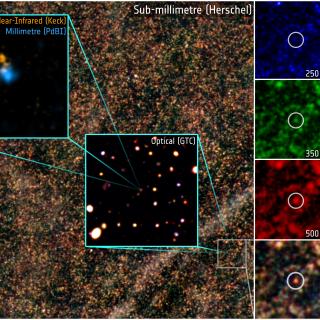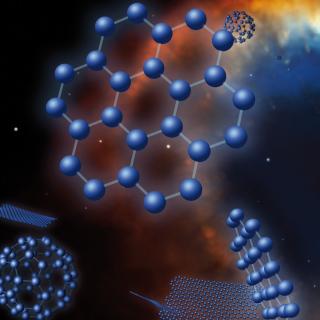Bibcode
Vaduvescu, O.; Hudin, L.; Mocnik, T.; Char, F.; Sonka, A.; Tudor, V.; Ordonez-Etxeberria, I.; Díaz Alfaro, M.; Ashley, R.; Errmann, R.; Short, P.; Moloceniuc, A.; Cornea, R.; Inceu, V.; Zavoianu, D.; Popescu, M.; Curelaru, L.; Mihalea, S.; Stoian, A.-M.; Boldea, A.; Toma, R.; Fields, L.; Grigore, V.; Stoev, H.; Lopez-Martinez, F.; Humphries, N.; Sowicka, P.; Ramanjooloo, Y.; Manilla-Robles, A.; Riddick, F. C.; Jimenez-Lujan, F.; Mendez, J.; Aceituno, F.; Sota, A.; Jones, D.; Hidalgo, S.; Murabito, S.; Oteo, I.; Bongiovanni, A.; Zamora, O.; Pyrzas, S.; Génova-Santos, R.; Font, J.; Bereciartua, A.; Perez-Fournon, I.; Martínez-Vázquez, C. E.; Monelli, M.; Cicuendez, L.; Monteagudo, L.; Agulli, I.; Bouy, H.; Huélamo, N.; Monguió, M.; Gänsicke, B. T.; Steeghs, D.; Gentile-Fusillo, N. P.; Hollands, M. A.; Toloza, O.; Manser, C. J.; Dhillon, V.; Sahman, D.; Fitzsimmons, A.; McNeill, A.; Thompson, A.; Tabor, M.; Murphy, D. N. A.; Davies, J.; Snodgrass, C.; Triaud, A. H. M. J.; Groot, P. J.; Macfarlane, S.; Peletier, R.; Sen, S.; İkiz, T.; Hoekstra, H.; Herbonnet, R.; Köhlinger, F.; Greimel, R.; Afonso, A.; Parker, Q. A.; Kong, A. K. H.; Bassa, C.; Pleunis, Z.
Bibliographical reference
Astronomy and Astrophysics, Volume 609, id.A105
Advertised on:
1
2018
Journal
Citations
12
Refereed citations
9
Description
Context. One-opposition near-Earth asteroids (NEAs) are growing in
number, and they must be recovered to prevent loss and mismatch risk,
and to improve their orbits, as they are likely to be too faint for
detection in shallow surveys at future apparitions. Aims: We
aimed to recover more than half of the one-opposition NEAs recommended
for observations by the Minor Planet Center (MPC) using the Isaac Newton
Telescope (INT) in soft-override mode and some fractions of available
D-nights. During about 130 h in total between 2013 and 2016, we targeted
368 NEAs, among which 56 potentially hazardous asteroids (PHAs),
observing 437 INT Wide Field Camera (WFC) fields and recovering 280 NEAs
(76% of all targets). Methods: Engaging a core team of about ten
students and amateurs, we used the THELI, Astrometrica, and the Find_Orb
software to identify all moving objects using the blink and
track-and-stack method for the faintest targets and plotting the
positional uncertainty ellipse from NEODyS. Results: Most targets
and recovered objects had apparent magnitudes centered around V 22.8
mag, with some becoming as faint as V 24 mag. One hundred and three
objects (representing 28% of all targets) were recovered by EURONEAR
alone by Aug. 2017. Orbital arcs were prolonged typically from a few
weeks to a few years; our oldest recoveries reach 16 years. The O-C
residuals for our 1854 NEA astrometric positions show that most
measurements cluster closely around the origin. In addition to the
recovered NEAs, 22 000 positions of about 3500 known minor planets and
another 10 000 observations of about 1500 unknown objects (mostly
main-belt objects) were promptly reported to the MPC by our team. Four
new NEAs were discovered serendipitously in the analyzed fields and were
promptly secured with the INT and other telescopes, while two more NEAs
were lost due to extremely fast motion and lack of rapid follow-up time.
They increase the counting to nine NEAs discovered by the EURONEAR in
2014 and 2015. Conclusions: Targeted projects to recover
one-opposition NEAs are efficient in override access, especially using
at least two-meter class and preferably larger field telescopes located
in good sites, which appear even more efficient than the existing
surveys.
Table 2 is only available at the CDS via anonymous ftp to cdsarc.u-strasbg.fr (130.79.128.5) or via http://cdsarc.u-strasbg.fr/viz-bin/qcat?J/A+A/609/A105
Related projects

Kinematic, Structural and Composition Studies of the Interstellar and Intergalactic Media
The basic objective of the broject is to investigate the evolution of galaxies by deepening our understanding of the interaction between the insterstellar medium and the stars.The main technique which we use is the two-dimensional kinematic study of whole galaxies observed using our instrument:GHaFaS, a Fabry-Perot interferometer on the William
Prof.
John E. Beckman

Formation and Evolution of Galaxies: Observations in Infrared and other Wavelengths
This IAC research group carries out several extragalactic projects in different spectral ranges, using space as well as ground-based telescopes, to study the cosmological evolution of galaxies and the origin of nuclear activity in active galaxies. The group is a member of the international consortium which built the SPIRE instrument for the
Ismael
Pérez Fournon

Milky Way and Nearby Galaxies
The general aim of the project is to research the structure, evolutionary history and formation of galaxies through the study of their resolved stellar populations, both from photometry and spectroscopy. The group research concentrates in the most nearby objects, namely the Local Group galaxies including the Milky Way and M33 under the hypothesis
Martín
López Corredoira

Galaxy Evolution in the Local Group
Galaxy formation and evolution is a fundamental Astrophysical problem. Its study requires “travelling back in time”, for which there are two complementary approaches. One is to analyse galaxy properties as a function of red-shift. Our team focuses on the other approach, called “Galactic Archaeology”. It is based on the determination of galaxy
Matteo
Monelli

Bipolar Nebulae
This project has three major objectives: 1) To determine the physico-chemical characteristics of bipolar planetary nebulae and symbiotic nebulae, to help understanding the origin of bipolarity and to test theoretical models, mainly models with binary central stars, aimed at explaining the observed morphology and kinematics. 2) To study the low
Antonio
Mampaso Recio

Nucleosynthesis and molecular processes in the late stages of Stellar Evolution
Low- to intermediate-mass (M < 8 solar masses, Ms) stars represent the majority of stars in the Cosmos. They finish their lives on the Asymptotic Giant Branch (AGB) - just before they form planetary nebulae (PNe) - where they experience complex nucleosynthetic and molecular processes. AGB stars are important contributors to the enrichment of the
Domingo Aníbal
García Hernández

Binary Stars
The study of binary stars is essential to stellar astrophysics. A large number of stars form and evolve within binary systems. Therefore, their study is fundamental to understand stellar and galactic evolution. Particularly relevant is that binary systems are still the best source of precise stellar mass and radius measurements. Research lines
Pablo
Rodríguez Gil

Black holes, neutron stars, white dwarfs and their local environment
Accreting black-holes and neutron stars in X-ray binaries provide an ideal laboratory for exploring the physics of compact objects, yielding not only confirmation of the existence of stellar mass black holes via dynamical mass measurements, but also the best opportunity for probing high-gravity environments and the physics of accretion; the most
Montserrat
Armas Padilla

Minor Bodies of the Solar System
This project studies the physical and compositional properties of the so-called minor bodies of the Solar System, that includes asteroids, icy objects, and comets. Of special interest are the trans-neptunian objects (TNOs), including those considered the most distant objects detected so far (Extreme-TNOs or ETNOs); the comets and the comet-asteroid
Julia de
León Cruz

Evolution of Galaxies
Galaxy evolution is a crucial topic in modern extragalactic astrophysics, linking cosmology to the Local Universe. Their study requires collecting statistically significant samples of galaxies of different luminosities at different distances. It implies the ability to observe faint objects using different techniques, and at different wavelengths
Jorge
Cepa Nogue